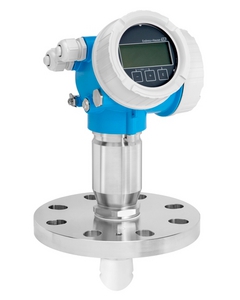Colorimetric analysis for Water and Wastewater monitoring
Among industries that deal with drinking water, wastewater and process water, it is necessary to monitor and control the levels […]
Foam is a negative side effect from agitation in certain processes. In the Water and Wastewater Treatment industry, overflows caused by foam increases the risk of damages and plant shutdowns – a recipe for lost production time and money because of unforeseen maintenance expenses.
The problem with traditional foam detection methods
The traditional method of managing foam overflow was the application of an anti-foam agent on a time-based schedule. However, this attempt at foam reduction on a time-based schedule is counterproductive and not cost-effective.
When anti-foam agents are on a time-based schedule, customers may apply the agent too early or too late when it comes to overflow prevention. This continuous application of the foam reducer is gratuitous and takes unnecessary time away from other tasks – not to mention the constant utilization of the agent is expensive.
However, modern instrumentation improves the foam detection process dramatically.
Using radar technology to detect the presence of foam
Endress+Hauser’s radar foam detection technology is a condition-based monitory that provides predictive maintenance by notifying the customer when there is a reduction of signal strength. This indicates the likely presence of foam. As a result, an anti-foam agent can only be activated when and for how long it’s needed, saving the customer time and money.

One instrument, the Micropilot FMR60, is the first 80 gigahertz radar, specializing in continuous, non-contact level measurement of liquids, pastes and slurries. The instrument offers maximum reliability due to the drip-off antenna, improved algorithms and a small beam angle. The FMR60 is not affected by variables such as temperature changes, media changes, vapors or gas blankets.
What’s more, the instrument has Heartbeat Technology, a tool that possesses smart sensor functionality. The Heartbeat Technology is responsible for detecting the exact quantity of foam before adjusting the dosage of the defoaming agent. Technical diagnostics are essentially initiated at the push of a button, so processes aren’t interrupted. Verification reports indicate whether the device is working correctly and it’s then either accepted or denied by verification authorities. Heartbeat Technology is comparable to a visit with a doctor. Customers can monitor the condition of a plant much like a doctor would monitor the pulse of their patient.
Heartbeat Technology in action
With Endress+Hauser’s Micropilot FMR60 with Heartbeat Technology, ARA Worblental, the third largest wastewater treatment plant in the Canton of Bern, is responsible for the main transport system and the treatment of the wastewater across the Worblental and Zollikofen regions in Switzerland. The FMR60 allows ARA Worblental to measure the fill level of the centrate water and detect the development of foam, thanks to Heartbeat Technology. The FMR60 has two power outputs which allows the process to occur simultaneously. Since the second power output regulates the defoaming pumps in a stepless manner, only a certain amount of foam is fed into the process and only as necessary.
Holistically, the FMR6x line of free space radar transmitters provide:
Simplicity
Increased productivity with Heartbeat Technology
The key is to detect the presence of foam before it causes major disruptions. With the FMR60 and radar foam detection, customers can detect these issues before their plant is shut down, increasing productivity, and saving both time and money from unfortunate – yet preventable – circumstances. Technology is now available to stay ahead of the curve in terms of foam overflow.
Among industries that deal with drinking water, wastewater and process water, it is necessary to monitor and control the levels […]
In today’s world, ensuring clean and safe water is more critical than ever. This Q&A with Endress+Hauser’s Liquid Analysis Product […]
In the not-too-distant past, collecting sufficient process data for operational decision-making was challenging, but the landscape is different today. With […]